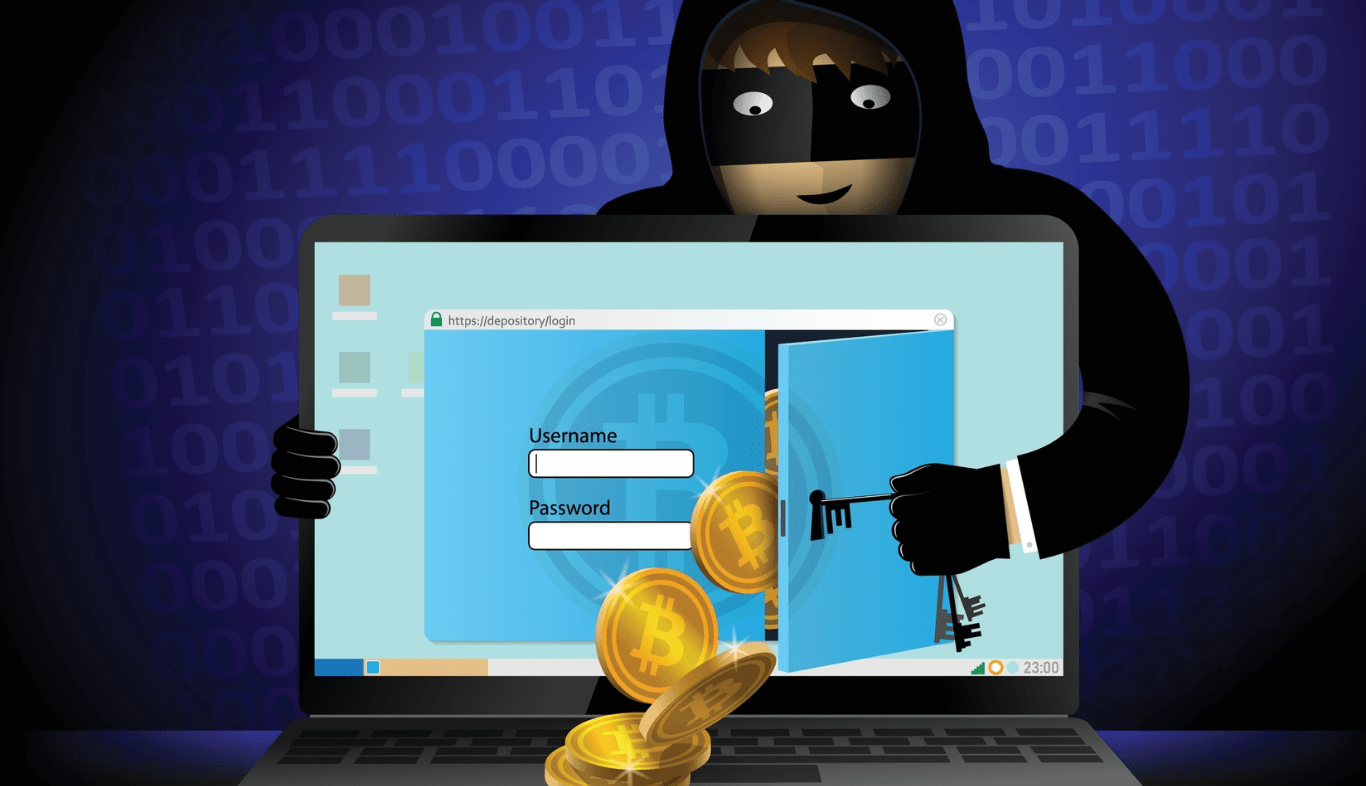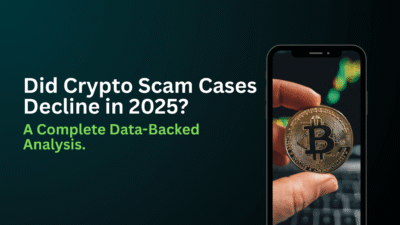
Top Crypto Scams in the world and How to Avoid Them

Crypto scams are a growing concern in the crypto industry, as scammers are targeting investors and consumers worldwide. These scams come in various forms, such as Ponzi schemes, Initial Coin Offerings (ICOs), Phishing scams, fake exchanges, cloud mining scams, Pump and dump schemes, and social media scams. These scams are becoming more sophisticated, making them harder to detect, and are causing significant financial losses to investors who are not aware of the risks.
Governments and regulatory bodies are struggling to keep up with these scams, and the crypto industry needs to take more responsibility to protect its users. It’s important for individuals and investors to be aware of these scams, understand how they work and to know how to protect themselves from them. This includes researching any investment opportunities, being cautious of unrealistic returns, and being aware of phishing attempts.
It is reported that from January to November 2022, hackers stole $4.3 billion worth of cryptocurrency. Top 5 crypto scams in 2022 are:
- FTX: $1-2 billion
- Axie Infinity’s Ronin Network: $615m
- Wormhole crypto bridge: $320m
- JuicyFields.io scam: $273m
- Unique-Exchange.co/PARAIBA scam: $267m
It’s vital to stay vigilant and informed about the latest trends and tactics of scammers, to avoid falling into their traps. With this article, we aim to raise awareness of the different types of crypto scams and provide readers with information and tips on how to protect themselves from these scams.
Top Crypto Scams in the World
1. Ponzi Schemes – Crypto Scams:
A Ponzi scheme in the crypto world is a type of investment scam that promises high returns on investments with little or no risk. The scheme operates by using funds from new investors to pay off earlier investors, giving the appearance of a profitable investment. However, the scheme is not sustainable and eventually collapses, leaving later investors with significant losses. In the crypto world, Ponzi schemes often involve investments in new or little-known cryptocurrencies, or promise unrealistic returns on investments in established cryptocurrencies. These schemes often use fake or misleading information to lure investors, and may use social media, online forums, or other platforms to reach potential investors.
2. Initial Coin Offerings (ICOs):
An ICO scam in the crypto world is a fraudulent initial coin offering (ICO) that uses false claims and promises to raise funds from investors, but never delivers on the promised products or services. ICO scams often involve creating a fake or misleading website, whitepaper, or other materials that give the impression of a legitimate investment opportunity. They may also use social media, online forums, or other platforms to reach potential investors.
In an ICO, a company or organization creates and sells digital tokens, which are similar to shares in a traditional initial public offering (IPO). These tokens can be used to access the company’s products or services, or to participate in the company’s governance. However, some ICOs are set up to scam investors, and the company or organization never actually delivers the promised products or services. Instead, they use the funds raised from the ICO to enrich themselves or to pay off earlier investors, giving the appearance of a profitable investment.
Investors should be cautious when considering an ICO, and should thoroughly research the company or organization behind the offering, as well as the team members, their experience, and the whitepaper. It’s also important to make sure that the company or organization has a clear and detailed business plan, and that the token has a real use case.
Also Read: Top Enterprise Blockchain Solution Providers in 2023
3. Phishing Scams:
These scams involve sending fake emails or messages that appear to be from legitimate sources, such as exchanges or wallet providers, in an attempt to steal personal information or login credentials.
Phishing scams in the crypto world involve sending fake emails or messages that appear to be from legitimate sources, such as exchanges or wallet providers, in an attempt to steal personal information or login credentials. These scams often use a technique called spear phishing, which targets specific individuals or groups of people.
The phishing emails or messages usually contain a link or a button that directs the recipient to a fake website that looks like the legitimate one, where they are prompted to enter their personal information, login credentials, or private key. The information is then used to steal the victim’s cryptocurrency or to gain access to their accounts.
In order to protect yourself from phishing scams, it’s important to be cautious when clicking on links or opening attachments in emails or messages. Always check the sender’s email address and the website’s URL to ensure they are legitimate. Additionally, it’s important to use a strong password and to enable two-factor authentication (2FA) on your accounts. It’s also good idea to avoid providing personal information, login credentials, or private key, unless you are sure of the authenticity of the website or email.
4. Fake Exchanges – Crypto Scams:
Scammers create fake crypto exchanges to steal money by setting up a website and social media accounts that look very similar to legitimate exchanges. They may also use similar names or logos to make the fake exchange appear authentic.
Once the fake exchange is set up, scammers use various tactics to lure in unsuspecting investors. They may offer unrealistic returns on investments, or claim to have insider knowledge of a new or little-known cryptocurrency that is about to skyrocket in value. They may also use social media, online forums, or other platforms to reach potential investors.
Once investors have deposited their funds into the fake exchange, the scammers may use a number of tactics to steal the money. They may simply disappear with the funds, or they may use the money to pay off earlier investors, giving the appearance of a profitable investment. They may also use the funds to buy and sell various cryptocurrencies, in an attempt to give the impression of legitimate trading activity.
In order to protect yourself from fake crypto exchange scams, it’s important to thoroughly research any exchange before depositing funds. This includes checking the exchange’s website, social media accounts, and online reviews to ensure it is legitimate. Additionally, always use a secure and reputable wallet to store your cryptocurrency, and never share your private key or login credentials with anyone. It’s also important to avoid providing personal information, login credentials, or private key, unless you are sure of the authenticity of the website or email.
5. Cloud Mining Scams:
These scams involve offering cloud mining services for a fee, but the company never actually mines any cryptocurrency and the customers never see a return on their investment.
Cloud mining scams in the crypto industry involve offering cloud mining services for a fee, but the company never actually mines any cryptocurrency and the customers never see a return on their investment. Cloud mining is a process where a company provides the necessary hardware and infrastructure to mine cryptocurrency, and customers can purchase a share of the mining power.
Scammers create fake cloud mining companies and websites, and offer contracts for customers to purchase a certain amount of mining power. They may also use social media, online forums, or other platforms to reach potential investors. However, these companies never actually mine any cryptocurrency, and the customers never see a return on their investment. Instead, the scammers use the funds raised from the contracts to enrich themselves or to pay off earlier investors, giving the appearance of a profitable investment.
In order to protect yourself from cloud mining scams, it’s important to thoroughly research any cloud mining company before investing. This includes checking the company’s website, social media accounts, and online reviews to ensure it is legitimate. Additionally, it’s important to be wary of any company that promises unrealistic returns on investments, or that doesn’t provide any information about their mining hardware or infrastructure. It’s also good idea to avoid providing personal information, login credentials, or private key, unless you are sure of the authenticity of the website or email.
6. Pump and Dump Schemes:
These scams involve artificially inflating the price of a cryptocurrency by buying it in large quantities and then selling it at a higher price, leaving investors with worthless coins.
Pump and dump schemes in the crypto world involve artificially inflating the price of a cryptocurrency by buying it in large quantities and then selling it at a higher price. The scheme is usually orchestrated by a group of individuals or an organization, who work together to artificially drive up the price of a particular cryptocurrency by buying it in large quantities and then spreading false or misleading information about it.
Once the price has been artificially inflated, the group then sells their holdings at a profit, leaving investors who bought in at the higher price with worthless coins. The scheme is often done in a short period of time, and the group behind it can make large profits, while leaving investors with significant losses.
Pump and dump schemes are illegal in many countries, and the individuals or organizations behind them can face legal consequences. To avoid falling into this trap, it’s important to be cautious of any sudden and unexplained price movements, and to be suspicious of any group or individual who is promoting a particular cryptocurrency and encouraging others to buy it. It’s also important to do your own research and not to invest in a cryptocurrency solely based on what someone else is saying, without understanding its fundamentals.
7. Social Media Scams:
These scams involve posting fake giveaways or promotions on social media platforms, asking users to send a small amount of cryptocurrency in order to receive a larger amount in return, which never happens.
Crypto scammers use social media platforms to conduct Social media scams by posting fake giveaways or promotions that ask users to send a small amount of cryptocurrency in order to receive a larger amount in return. The scammers may use well-known social media platforms such as Twitter, Facebook, and Instagram, to reach a large audience and to appear legitimate.
The scammers often impersonate well-known figures, celebrities, or reputable organizations in the crypto world, to gain trust and credibility. They may also use fake accounts or bots to post the giveaways or promotions and to interact with potential victims. They may also use links to fake websites, that look similar to legitimate ones, to ask users to enter their personal information, login credentials, or private key.
Once the users have sent their cryptocurrency, the scammers disappear with the funds and the users never receive the promised return on their investment. To avoid falling for these scams, it’s important to be cautious when clicking on links or opening attachments in social media posts, and to be suspicious of any giveaways or promotions that seem too good to be true. It’s also important to verify the authenticity of the account or page that is posting the giveaway or promotion, and to be careful of any posts that ask for personal information or login credentials.





Can you be more specific about the content of your article? After reading it, I still have some doubts. Hope you can help me.
Please let me know how we may help you. Happy to help.
I don’t think the title of your article matches the content lol. Just kidding, mainly because I had some doubts after reading the article.